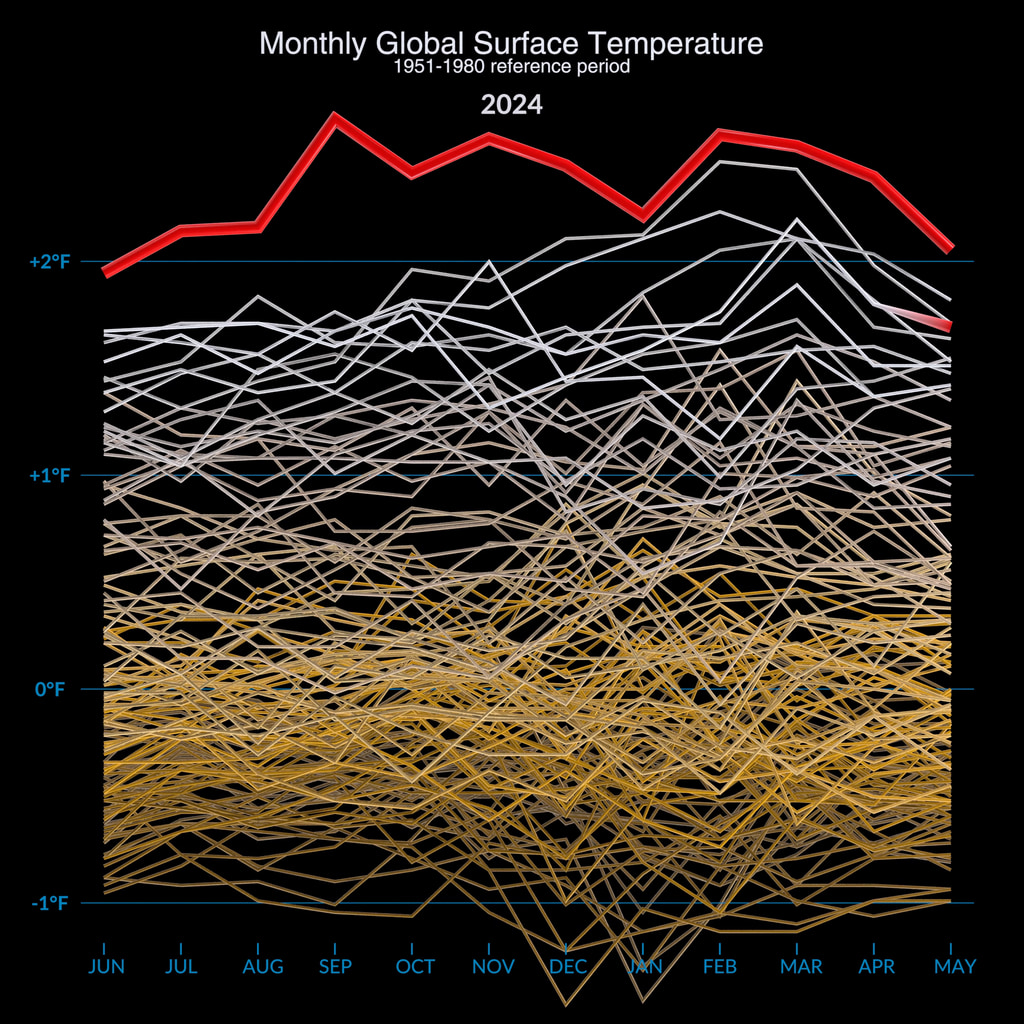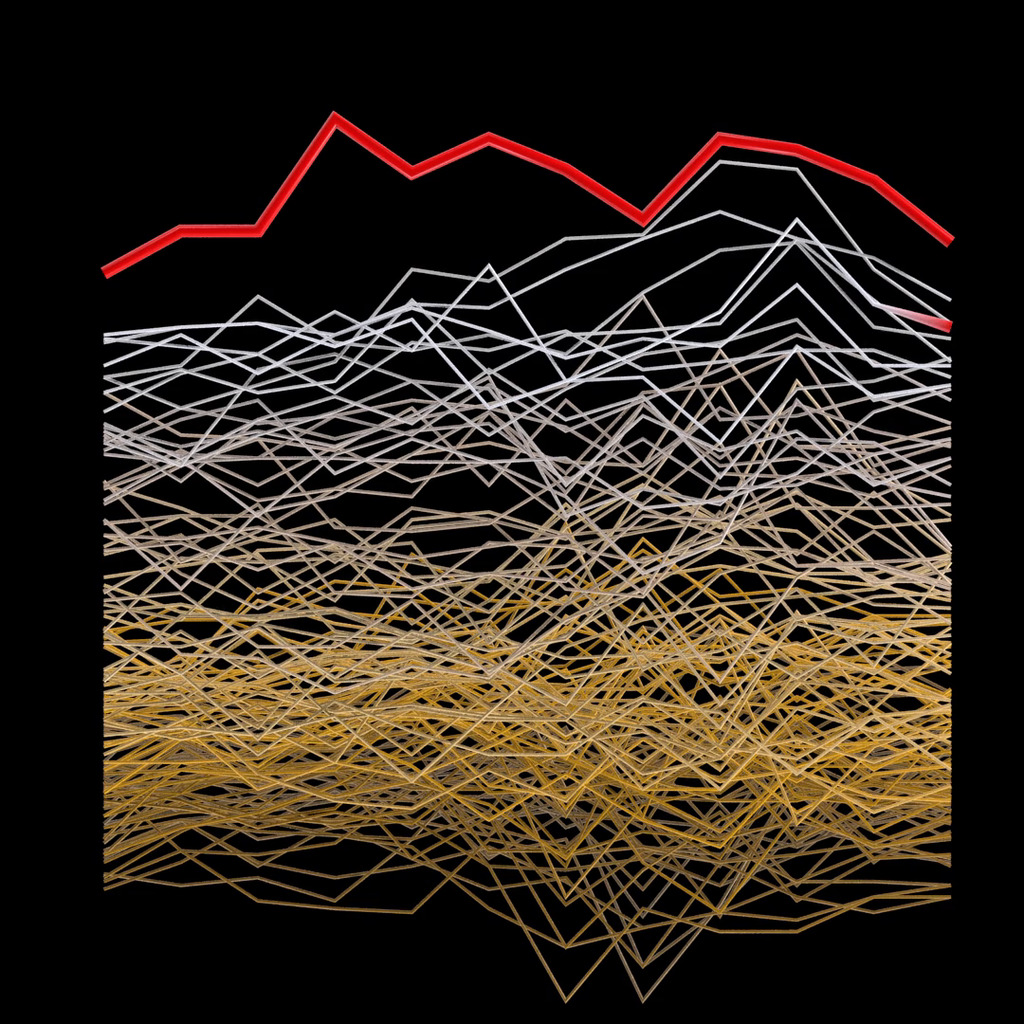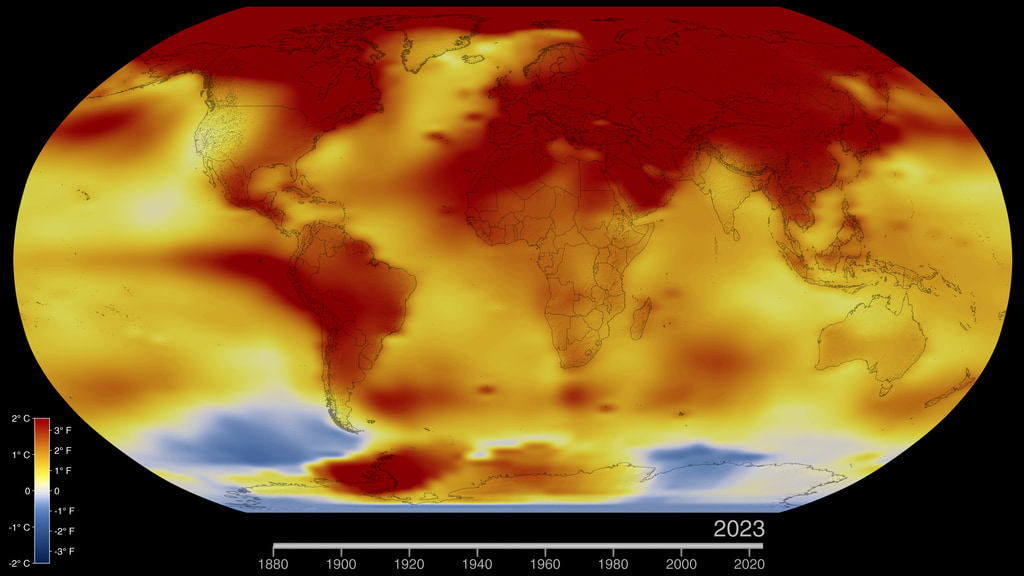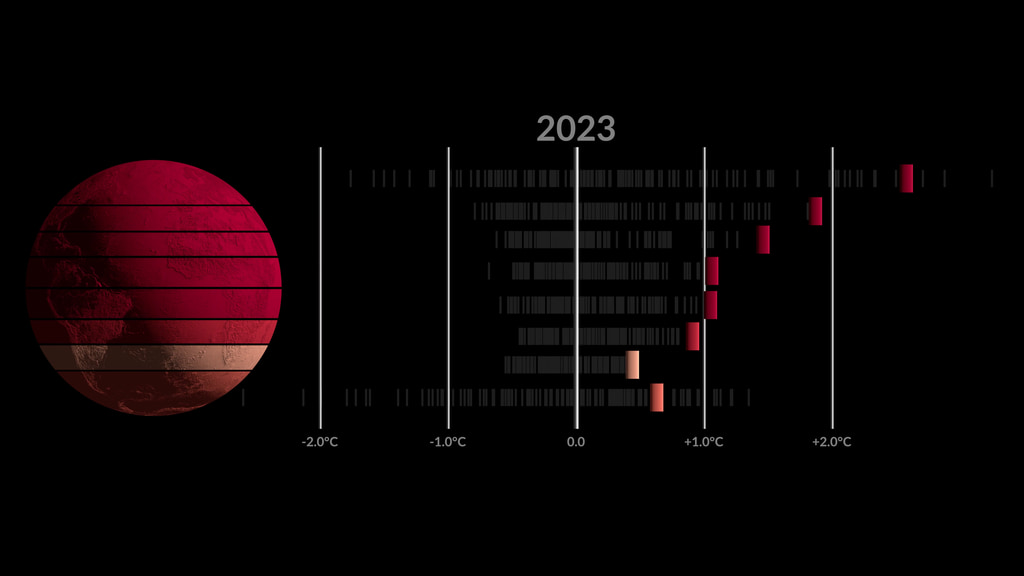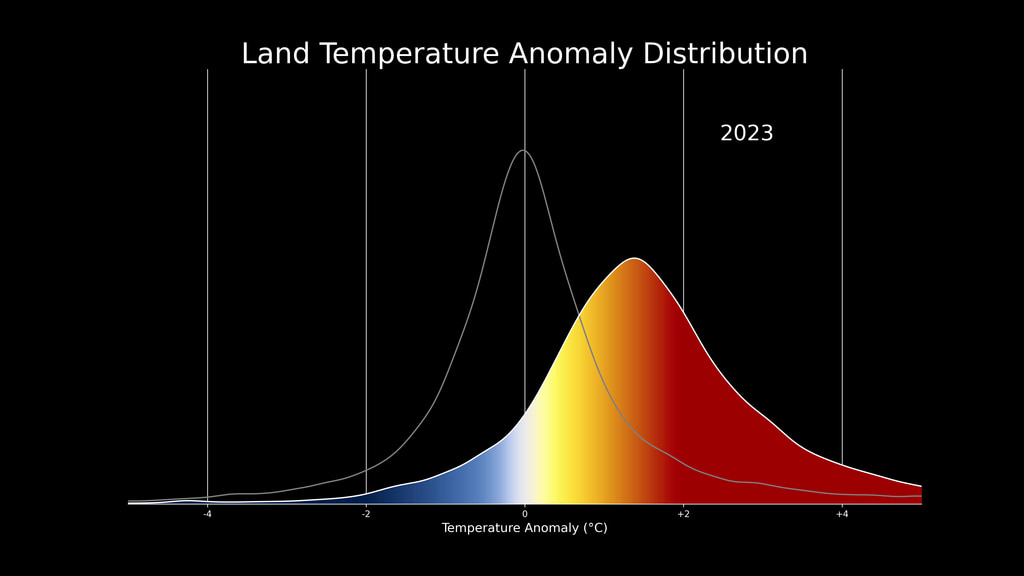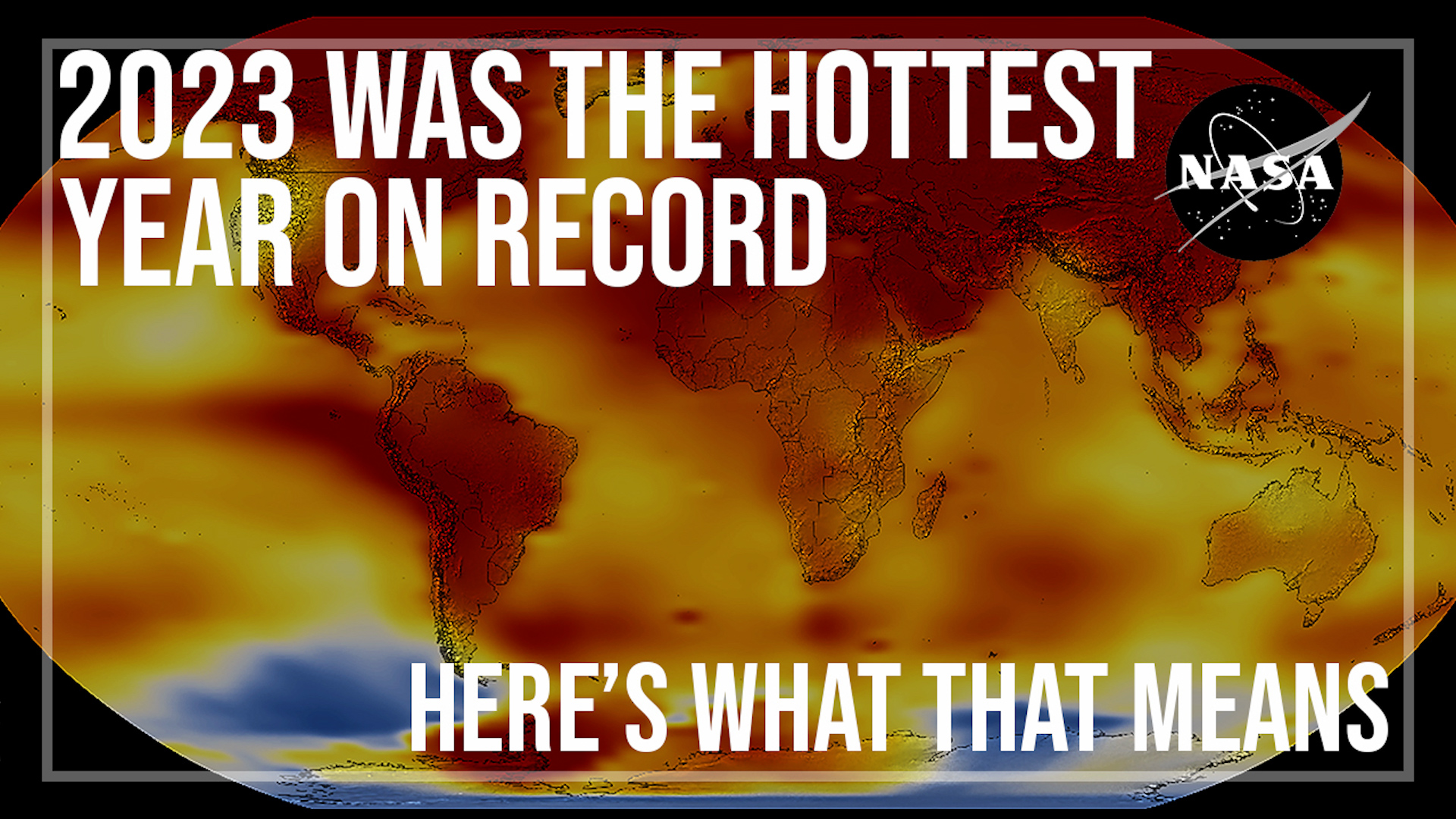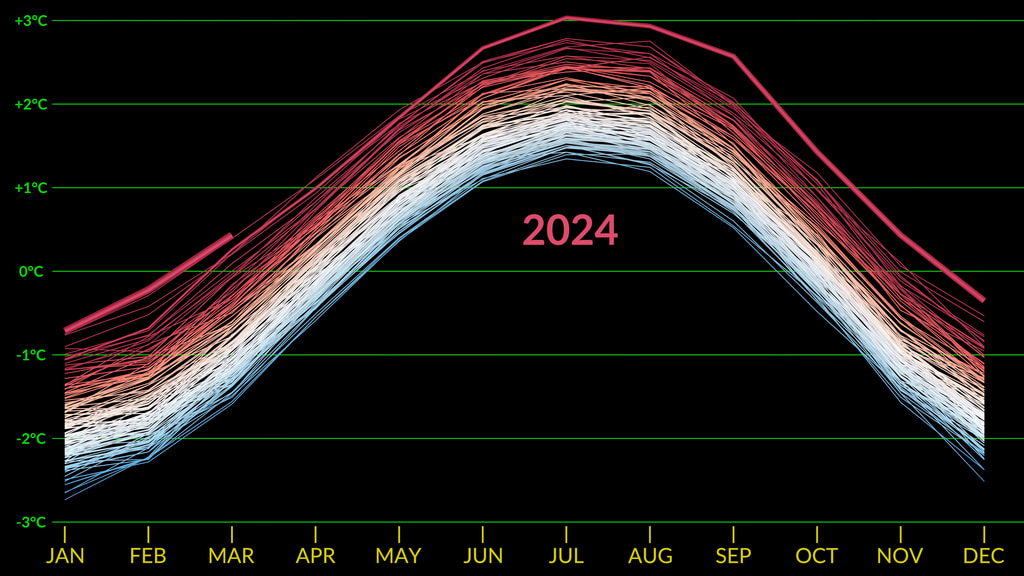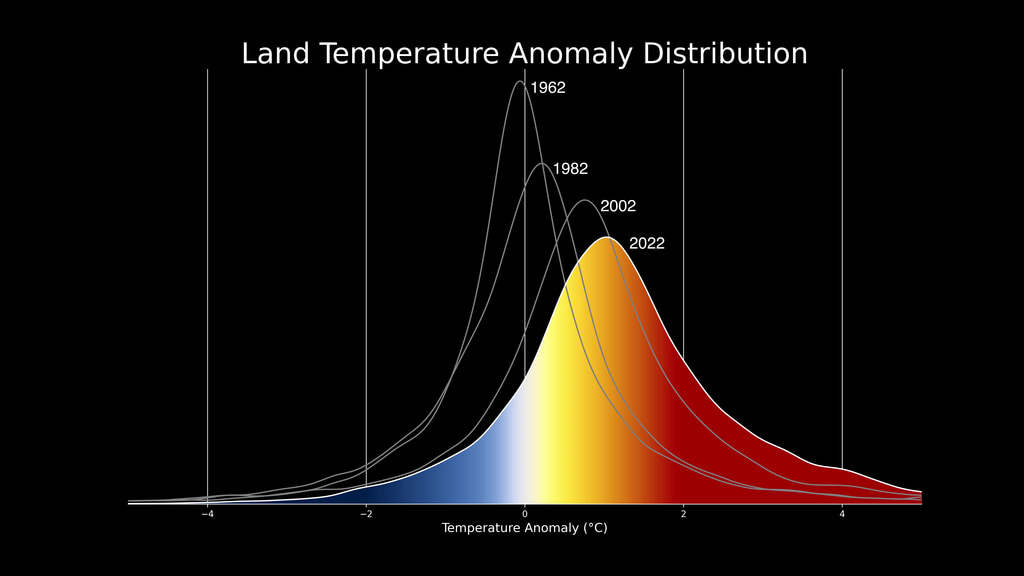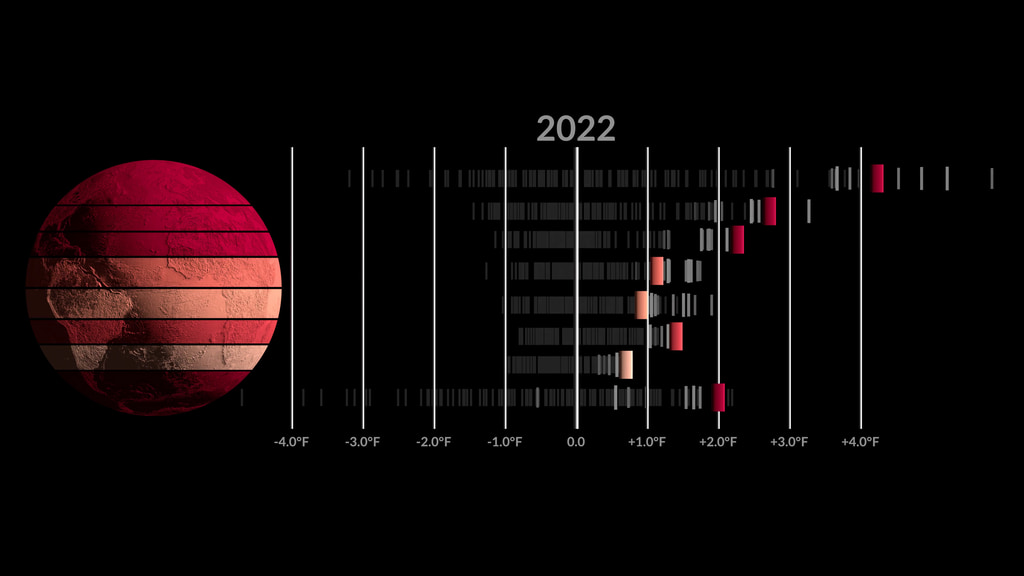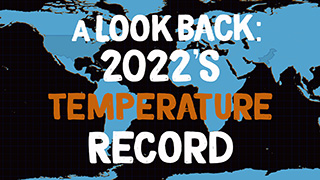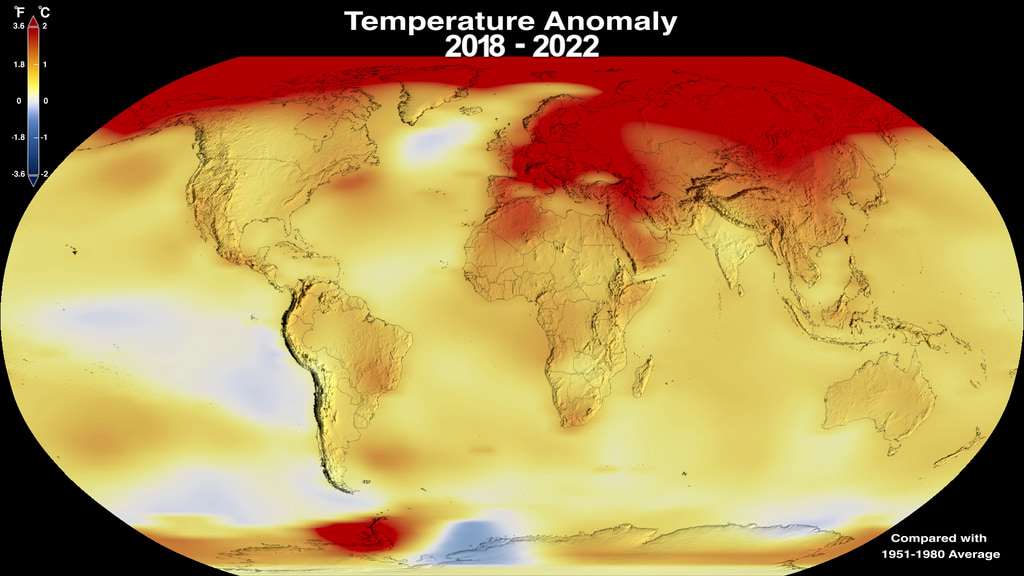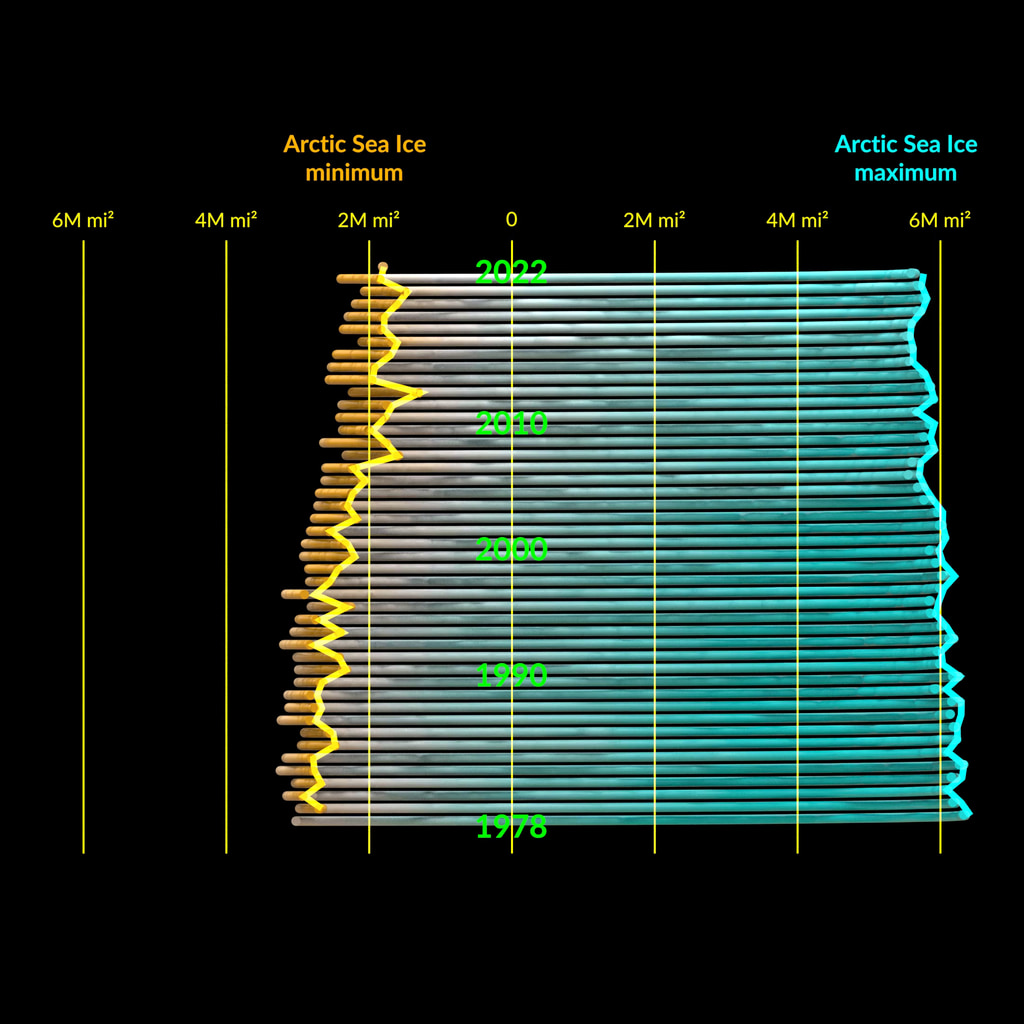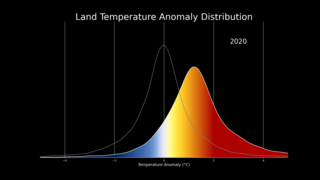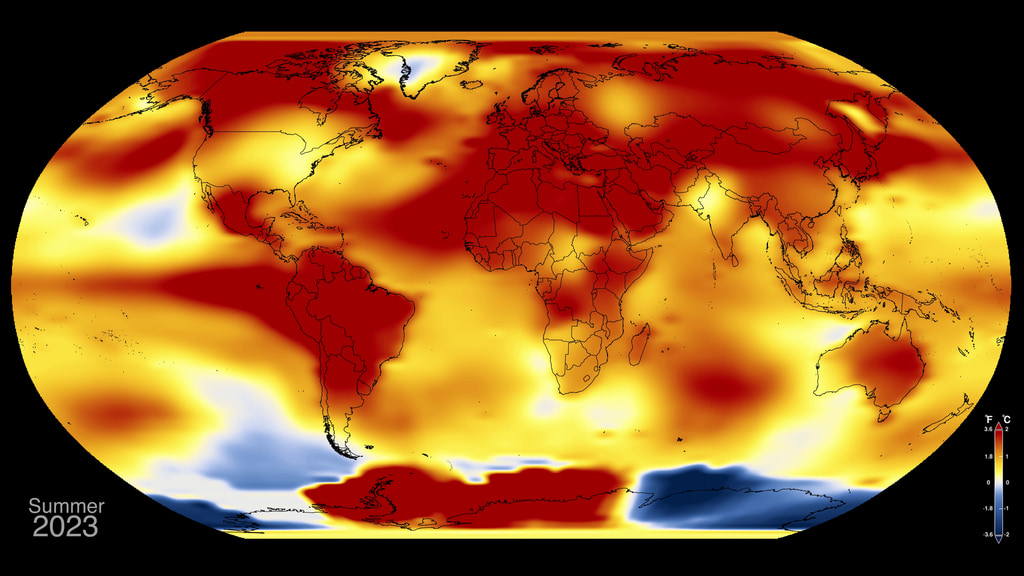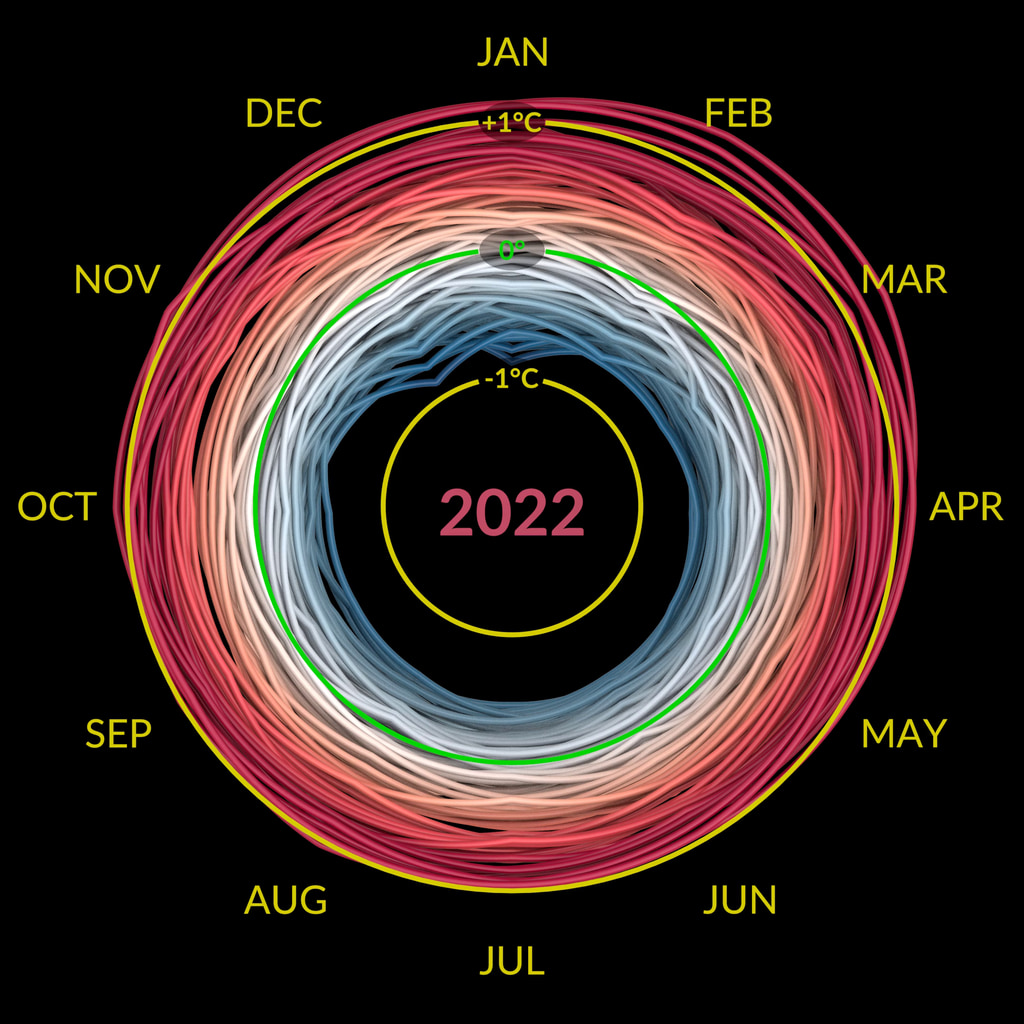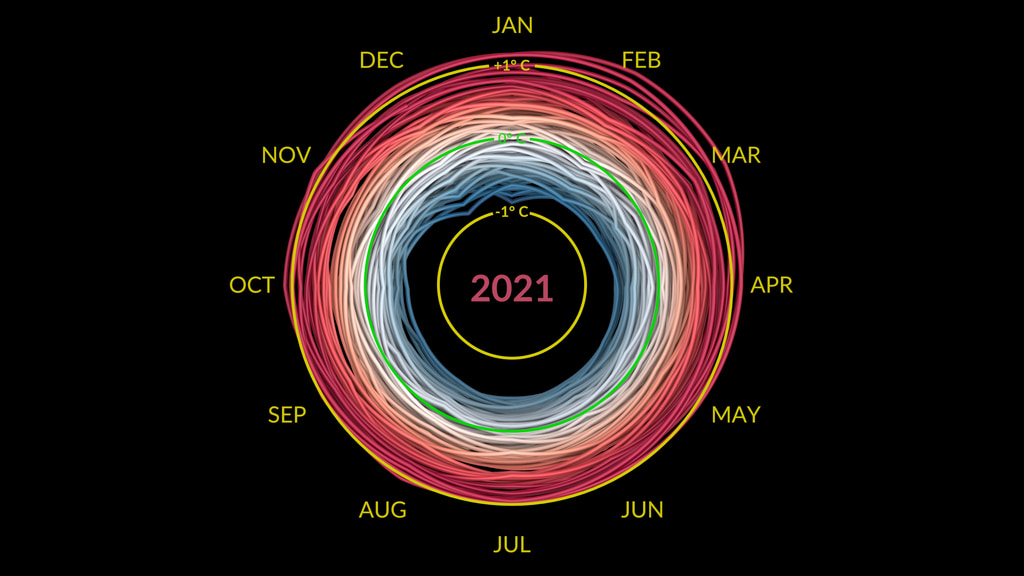NASA Climate Spiral 1880-Present
The NASA climate spiral visualization with labels in English and Celsius.
The visualization presents monthly global temperature anomalies. This visualization is updated roughly two weeks after the end of each month.
Temperature anomalies are deviations from a long term global average. In this case the period 1951-1980 is used to define the baseline for the anomaly. These temperatures are based on the GISS Surface Temperature Analysis (GISTEMP v4), an estimate of global surface temperature change. The data file used to create this visualization is publicaly accessible here.
The term 'climate spiral' describes an animated radial plot of global temperatures. Climate scientist Ed Hawkins from the National Centre for Atmospheric Science, University of Reading popularized this style of visualization in 2016.
The Goddard Institute for Space Studies (GISS) in New York is a NASA laboratory managed by the Earth Sciences Division of the agency’s Goddard Space Flight Center in Greenbelt, Maryland. The laboratory is affiliated with Columbia University’s Earth Institute and School of Engineering and Applied Science in New York.
The NASA climate spiral visualization with labels in English and Fahrenheit.
The NASA climate spiral visualization with labels in Spanish and Celsius.
Credits
Please give credit for this item to:
NASA's Scientific Visualization Studio
-
Visualizers
- Mark SubbaRao (NASA/GSFC)
- Ed Hawkins (National Centre for Atmospheric Science, University of Reading)
-
Technical support
- Laurence Schuler (ADNET Systems, Inc.)
- Ian Jones (ADNET Systems, Inc.)
-
Web administrator
- Ella Kaplan (Global Science and Technology, Inc.)
-
Scientist
- Gavin A. Schmidt (NASA/GSFC GISS)
-
Science support
- Peter H. Jacobs (NASA/GSFC)
Release date
This page was originally published on Wednesday, November 15, 2023.
This page was last updated on Wednesday, July 17, 2024 at 12:11 AM EDT.
Datasets used in this visualization
-
GISTEMP [GISS Surface Temperature Analysis (GISTEMP)]
ID: 585The GISS Surface Temperature Analysis version 4 (GISTEMP v4) is an estimate of global surface temperature change. Graphs and tables are updated around the middle of every month using current data files from NOAA GHCN v4 (meteorological stations) and ERSST v5 (ocean areas), combined as described in our publications Hansen et al. (2010) and Lenssen et al. (2019).
Credit: Lenssen, N., G. Schmidt, J. Hansen, M. Menne, A. Persin, R. Ruedy, and D. Zyss, 2019: Improvements in the GISTEMP uncertainty model. J. Geophys. Res. Atmos., 124, no. 12, 6307-6326, doi:10.1029/2018JD029522.
This dataset can be found at: https://data.giss.nasa.gov/gistemp/
See all pages that use this dataset
Note: While we identify the data sets used in these visualizations, we do not store any further details, nor the data sets themselves on our site.
